By:
- Inga Kiderra
Published Date
By:
- Inga Kiderra
Share This:
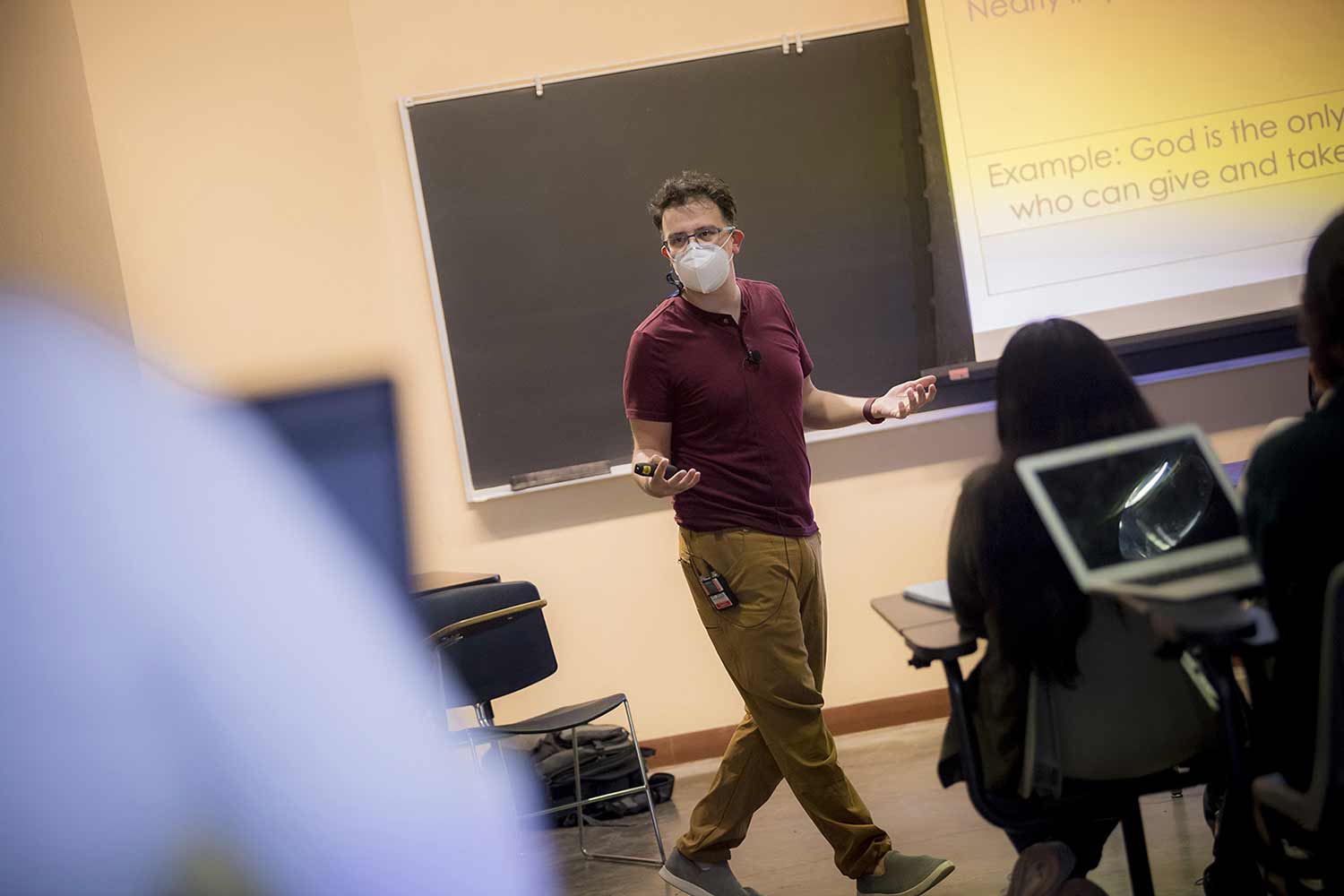
Political sociologist Michel Estefan during his “Social Justice” course, Spring 2022. Photos by Erik Jepsen/University Communications.
Short Group Quizzes Go a Long Way to Building a Class Community
Sociologist Michel Estefan implements fresh teaching techniques in his courses to ensure an education that’s genuinely inclusive and student-centered
Innovation in a classroom doesn’t have to be whiz-bang or complicated to be effective, says Michel Estefan, an assistant teaching professor in UC San Diego’s Department of Sociology. Small, but creative tweaks to conventional approaches to teaching, like small group work, can go a long way toward creating a sense of community in a class and building a culture of collaboration, he says.
Estefan, whose subject-matter expertise is political sociology, has also been researching and publishing on pedagogy. The two areas—political sociology and pedagogy—are not unrelated, though. Some of the same insights apply in both: It’s not enough to talk about community and inclusivity, for example. To become real, these values must be put into practice.
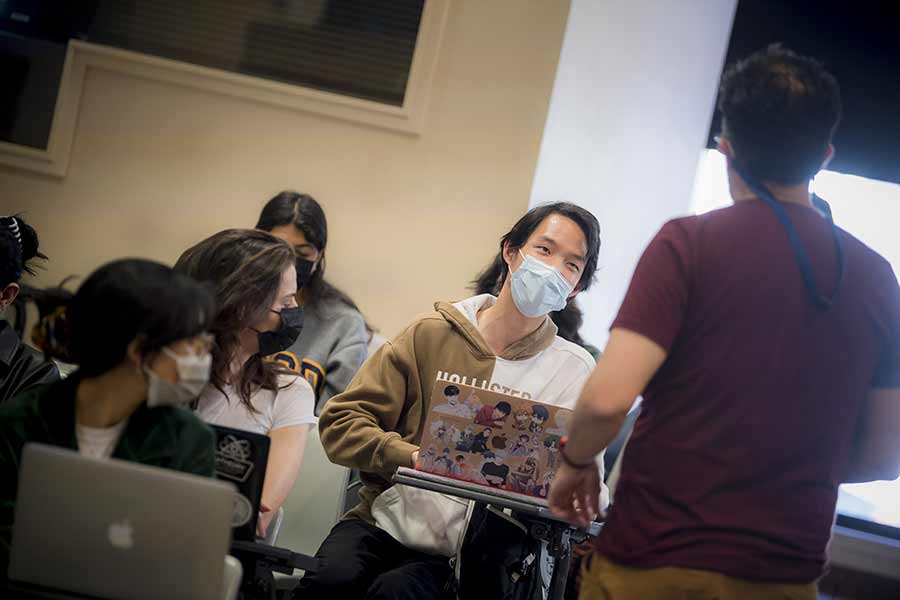
Community is one of the central values in Estefan’s classes.
“If you say ‘community matters’ but then every single grade is individual, how much does community matter? If you really want community, it has to be embedded in the rules that organize student interactions in the classroom,” Estefan said.
If we know anything from sociology, he says, it’s that people tend to gravitate toward people who are like them, which presents a real challenge for inclusion in the context of diversity. “So if your goal is to build genuinely inclusive classrooms, you have to design structures that incentivize meaningful connections across the diversity in a given group. You can’t just hope for this—or message about it.”
One of these structures is the group quiz with a collective grade, which Estefan gives weekly based on that week’s reading materials. Students answer multiple-choice questions together, through discussions in small groups, and the entire group must all submit the same answers, save one. The decision rule, he notes, is by consensus not simple majority, “because then the majority has to bring in the minority—they have to persuade and can’t just overrule.”
Through the group quiz, Estefan said, “individual success is connected to everybody else’s.”
The only question students answer independently is the very last, where they grade themselves on their contribution to the group.
It starts with design
When designing a course, it is important not only to be clear and transparent in your expectations but also to set them in such a way that all students can succeed, wherever they are in their lives.
Estefan makes sure that no single exam or assignment is worth so much (40%, say) that it dooms a student’s grade if they have an emergency or added responsibilities or just don’t bring their best selves one week. He also puts directly into the syllabus three possible extra-credit assignments, signaling from the start that he won’t police a student’s time and that they can make up points if they miss some.
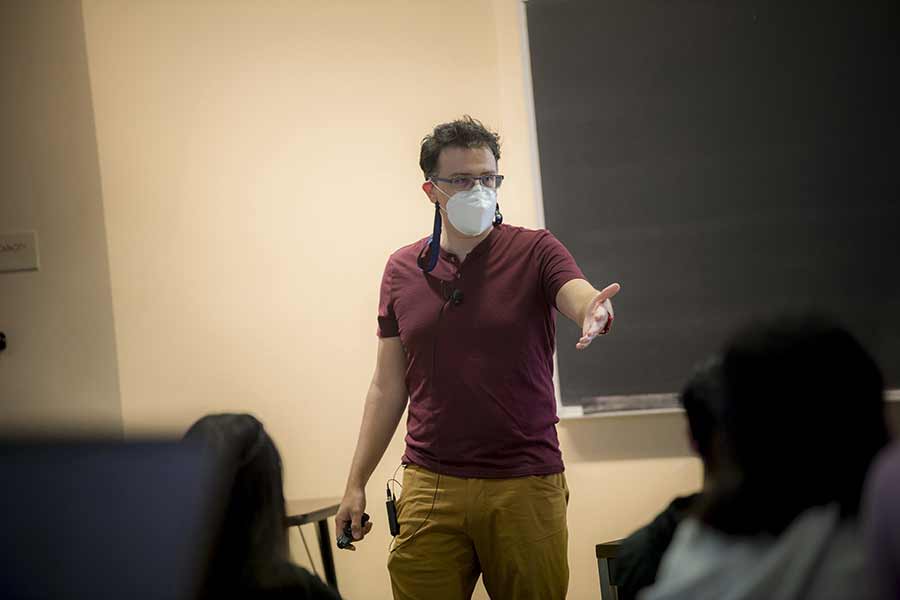
Estefan encourages participation from all his students in a variety of ways.
“I’ve been many students,” said Estefan, who went to schools in Mexico, before going on to earn his doctorate at UC Berkeley. “I’ve been the star student. But there have been times when I was just not. I’ve been the mediocre student and the struggling student.”
Estefan grew up in a single-parent household. His father had a degree in accounting. But his mother, with whom he lived after his parents split, never went to college. Partway through his Ph.D., Estefan’s mom was diagnosed with lung cancer. He spent a lot of time traveling back to Mexico to be with her before she passed. He also became a dad while in grad school. At no point, he says, did his professors make him feel like he had to choose between his studies and his family, or that he was somehow falling behind.
“I was very fortunate with my mentors at Berkeley,” Estefan said. “I always felt supported not just in my academic work but also my personal life—the context in which my academic life was unfolding.”
That lesson stuck with him, as did earlier examples of teachers who were also “emphatic about connecting with students as full human beings,” Estefan said. “No one wants to feel like a number, like student no. 83—everyone wants to be treated like a complete individual.”
Point of view
To ensure he treats his students as complete individuals, he begins with welcome surveys. That doesn’t mean asking cute questions about pets or music preferences (thought those don’t hurt) but finding out about students’ life circumstances and whether they’ve already done the types of assignments the class requires.
“You have to start from who your students are—how many are working two jobs or how many are commuting from L.A.?” Estefan said. “How many have never done the kind of essay I’ll be asking them to do? How can I then scaffold their learning?”
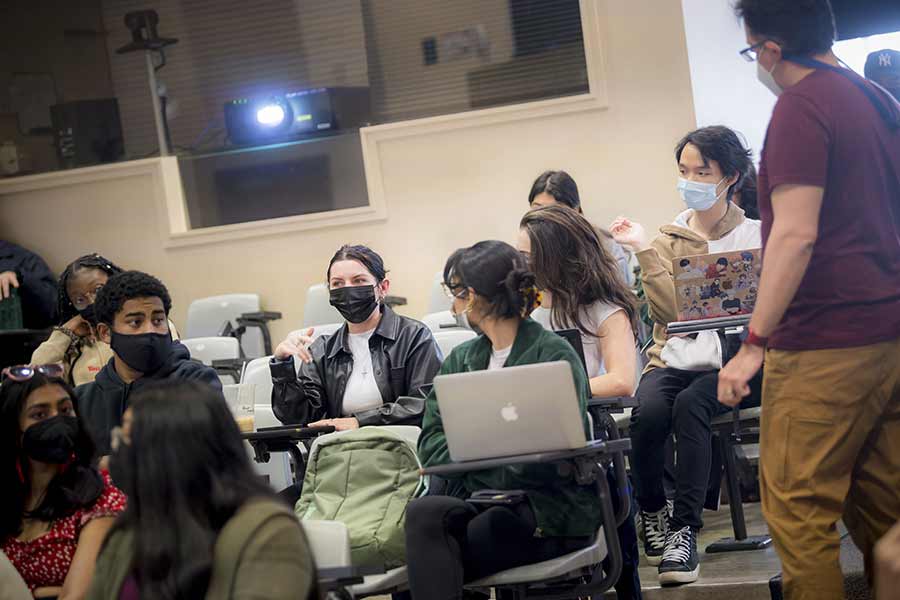
“Sometimes,” Estefan says, “the most important thing for a prof is to not say anything—sometimes being quiet is the best thing you can do.”
Obviously, some students come from more privileged backgrounds than others. And some can be full-time students while others have to work outside of school as well. But those are not insoluble differences. “We can reproduce inequality in our classrooms, or we can subvert it,” Estefan said.
Part of the puzzle is encouraging participation from everyone. Estefan, who began teaching at UC San Diego remotely at the height of the pandemic, noticed that one of the benefits of Zoom class is the chat function, which seems to encourage some students to speak up. To that end, his in-person classes now also come with a written chat, just via Discord.
Coming at the course material from the perspective of a student is also key.
“The question is not what should a political sociologist know, but what aspects of political sociology would best help my students achieve their learning goals?” Estefan said. “When you shift from thinking from the point of view of the discipline to thinking from the point of view of students, everything changes.”
‘Student hours’ and support pods
Instead of “office hours,” he offers “student hours.” Part of the participation grade in his courses is to visit him or his T.A. during “student hours” at least once.
“In some cultures the proper interaction with a person in authority (like a professor) is to stay quiet—to not to advocate for yourself,” he said. He gets around that concern with the requirement and by letting students know from the get-go that those hours are there to support them.
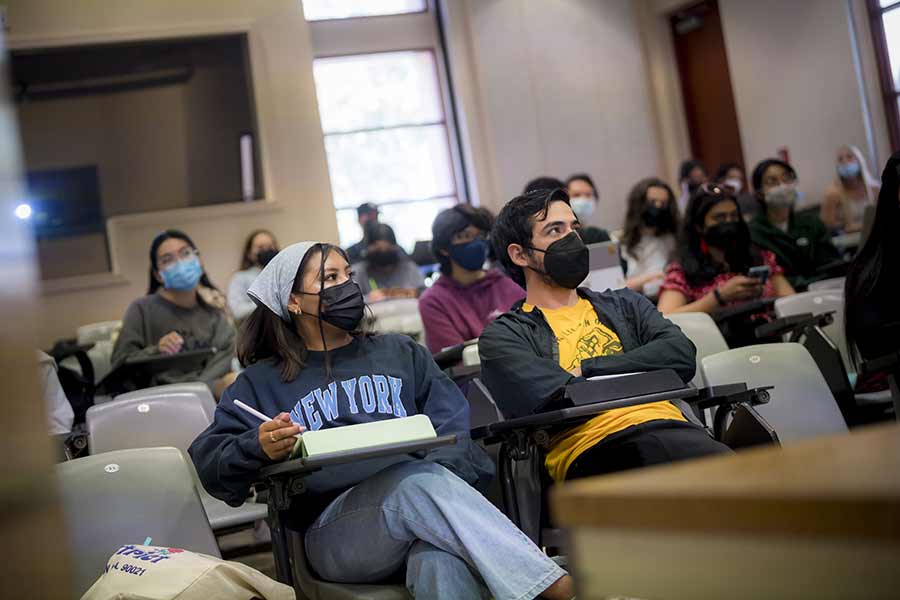
Thinking from the point of view of the student changes everything, Estefan says.
Also there to support students are what Estefan calls “Support Pods.” On the first day of class, three to five students are randomly assigned to a group and share their contact information with each other. Each pod has an appointed leader, and Estefan reaches out to the pod leader three or four times a quarter asking if anyone might need more support or attention.
Last quarter, a pod leader let Estefan know that one of their members had lost her housing and was financially responsible for her sibling. The student herself had not reached out, not because she was intimidated but was just too busy to keep her head above water to even think about it, Estefan said.
The pods, like the group quizzes, encourage community and camaraderie from day 1.
Being seen
Students have taken note. Jianna Puccio, a second-year transfer student majoring in sociology with a specialty in social inequalities, said: “If I had the opportunity to build a class from start to finish, from course materials to classroom culture, I would have Professor Estefan’s class to a T.”
Wyndi Valencia, also a sociology major, describes herself as a first-generation Latinx student and credits Estefan with giving her the confidence to consider pursuing a master’s degree, something that seemed unthinkable just a short while ago. “It is very apparent that he cares about the well-being and success of all his students,” Valencia said. “Professor Estefan does his absolute best to…make sure that we all receive the extra support we need from him, our TAs and fellow students…. He makes us feel seen and heard.”
Fellow faculty have also noticed.
“Michel started with us just a couple of years ago. And while it usually takes some time for professors to establish their reputations with students, Michel’s courses are already all waitlisted,” said Amy Binder, chair of the Department of Sociology. “He jumped into existing courses and made them his own, to where students are lining up in droves to take them, and he’s brought in new courses that students really appreciate—the sociology of social justice, for example, and another on race and racism in the United States.”
He’s also “an amazing citizen,” Binder said, having held a number of pedagogy workshops for faculty and for graduate students.
For his part, Estefan says, “being a kind and conscientious instructor is not only the right thing to do and a good thing to be, but it’s actually pedagogically effective. A meaningful learning experience affirms who you are—it values what is distinct about your life story and leverages that.
“The best learning,” he said, “happens when you can be fully present.”
To read more about Estefan’s innovative approach to teaching, check out a recent paper, “Teaching Social Theory as Cartography,” or coverage of his group quizzes in the Chronicle of Higher Education or some of his own writing in Inside Higher Ed, like “Show Them You Care.”
Share This:
Stay in the Know
Keep up with all the latest from UC San Diego. Subscribe to the newsletter today.



